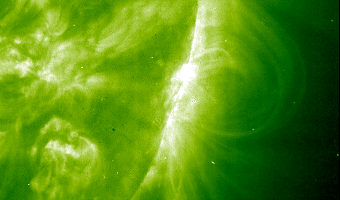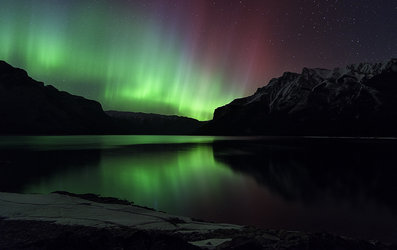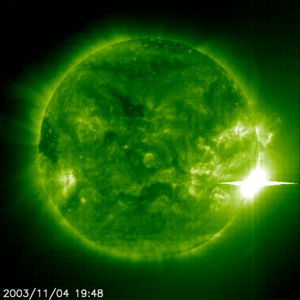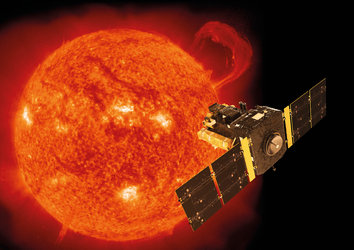Biggest EVER solar flare!
Just as solar scientists were starting to breathe normally again, active sunspot region 10486 released yet another massive flare - but this one is bigger than anything yet seen in recorded observational history.
On Tuesday, 4 November 2003, this flare saturated the X-ray detectors on several monitoring satellites, so the definitive classification of the flare is still being worked on. However, it is estimated that it could have been well above X20, a level never seen before by SOHO.
The associated coronal mass ejection (CME) came out of the Sun's surface at about 2300 kilometres per second (8.2 million km/h). Only part of the CME is directed towards Earth, so we expect the Earth will receive only a glancing blow, since the source region is pointing away from us on the right on the limb of the Sun as seen from Earth.
SOHO gives early warning

Early last week, the large sunspot region was observed by many scientists around the world. Called sunspot region 10484, it was associated with several powerful solar flares, including one X-class event (the most powerful category). But then another region, number 10486, rotated onto the solar disk, showing even more signs of activity.
However, this particular region had caught the attention of solar physicists even before it was visible - while it was still on the far side of the Sun!
The ESA/NASA SOHO spacecraft has an instrument on board called the Michelson Doppler Imager, or MDI, which can produce images of the Sun's far side.
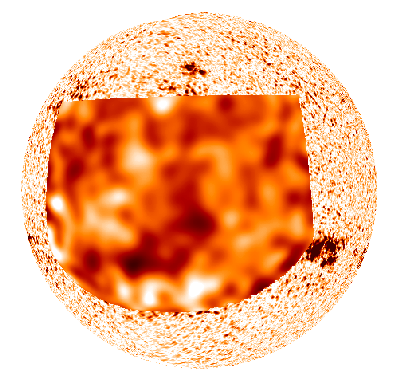
The MDI uses a technique called seismic holography to detect active regions on the far side. Energetic phenomena such as solar flares and coronal mass ejections create 'waves' which travel back through the Sun.
These waves are reflected around inside the solar interior, and the resulting patterns of these waves can be seen by MDI on the surface of the near side. This is similar to seismologists using seismographs on Earth to detect earthquakes.
Although SOHO's MDI can only observe the central part of the Sun's disc, it can produce whole-Sun maps of magnetic activity, every 12 hours. Seismic imaging of far-side solar activity allows us to anticipate the appearance of large active regions more than a week ahead of their arrival on the eastern solar limb.
The Sun takes 28 days to make a full rotation so, in about a week from now, sunspot 10486 will reach the central part of the far side. Then SOHO will be able to follow the evolution of this spot to really see how powerful the latest flare has been. Only the MDI instrument on SOHO is able to tell us this.


